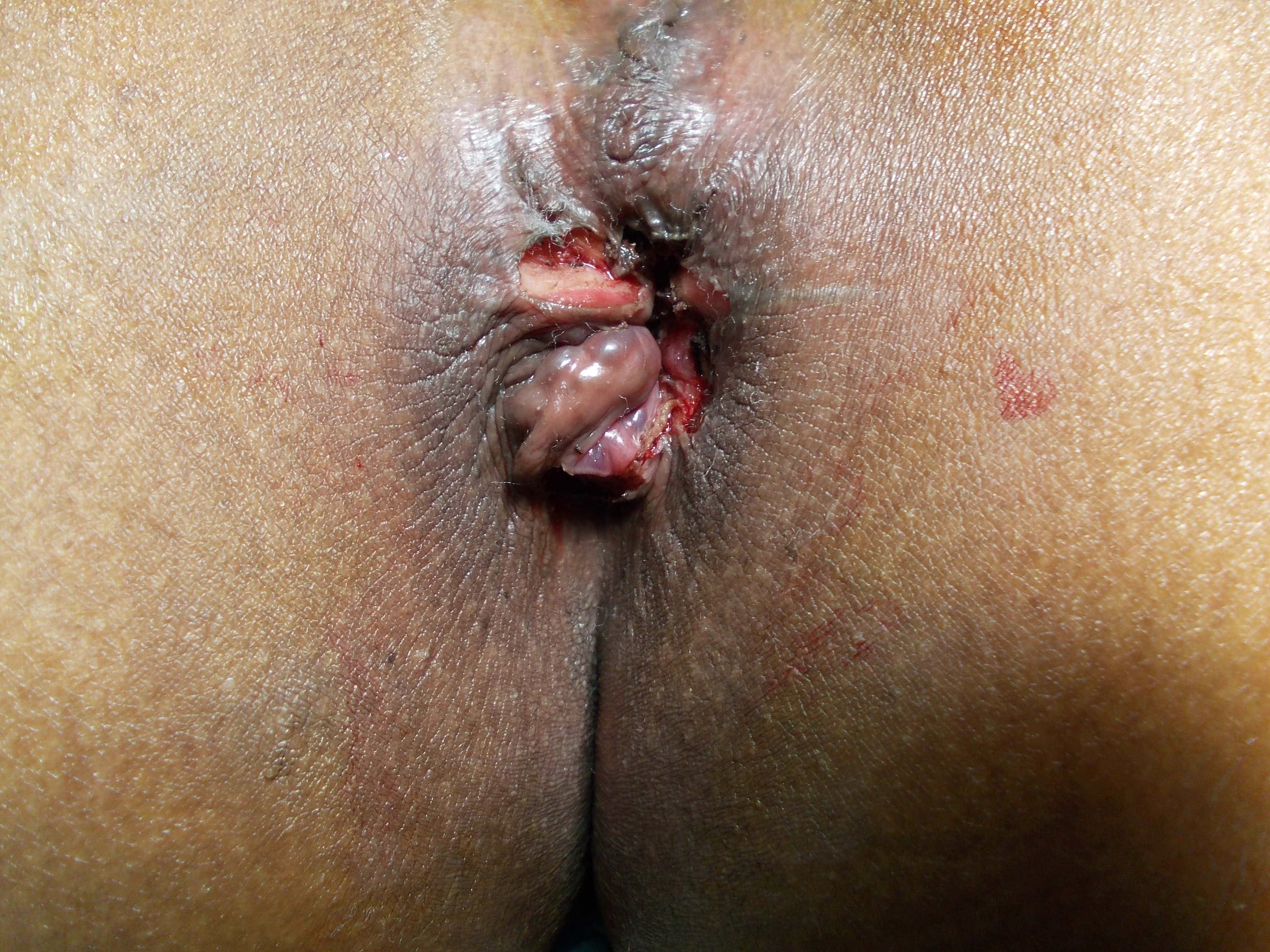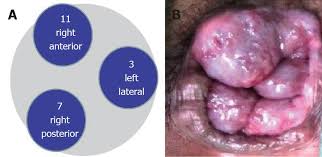1) What are hemorrhoids/Piles?
Hemorrhoids in general terminology are called as ‘Piles’ Hemorrhoids are masses or cushions of tissues with enlarged, bulging blood vessels in and about the anus and anal canal
Although most people think hemorrhoids are abnormal, they are present in everyone. However, only when the hemorrhoidal cushions enlarge, and causes bleeding it need treatment
There are two types of hemorrhoids
External (outside):- Hemorrhoids develop near the anus and are covered by very sensitive skin and can be seen externally
Internal (inside):- Hemorrhoids develop within the anus lined by anal mucosa.
Internal hemorrhoids are classified by their degree of prolapsed;-:
Grade One: No prolapsed, pile mass doesn’t come out of anus
Grade Two: Prolapse that goes back in, on its own, pile mass come out of anus during defecation but goes in automatically.
Grade Three: Prolapse that must be pushed back in by the patient. Here pile mass has to be pushed inside once oit come out
Grade Four: Prolapse that cannot be pushed back in by the patient (often very painful)
2) What causes hemorrhoids?
The upright posture of humans alone forces a great deal of pressure on the rectal veins, which sometimes causes them to bulge. Other contributing factors include:
Aging
Chronic constipation or diarrhea
Heavy lifting
Pregnancy
Heredity
Straining during bowel movements
Faulty bowel function due to overuse of laxatives or enemas
Spending long periods of time (e.g., reading) on the toilet
Sitting or standing in one position for long periods of time
Lack of exercise can contribute to the development of hemorrhoids.
3) What are the symptoms?
If you notice any of the following, you could have hemorrhoids:
Bleeding during bowel movements
Protrusion during bowel movements
Itching in the anal area
Pain
Sensitive lump(s)
4) How are hemorrhoids treated?
Conservative management with diet ;-
• Straining to have bowel movements promotes hemorrhoids and hard stools can traumatize existing hemorrhoids and cause bleeding
• Soften your stools by increasing the fiber in your diet. Fiber is found in numerous foodstuffs including fresh and dried fruits, vegetables, grains, and cereals. Stool softeners and increased drinking of liquids is also recommended
Mild symptoms can be relieved frequently by increasing the amount of fibre (e.g., fruits, vegetables, breads and cereals) and fluids in the diet.
Eliminating excessive straining reduces the pressure on hemorrhoids and helps prevent them from protruding.
A sitz bath - sitting in plain warm water for about 10 minutes - can also provide some relief .
Laser Surgery for Hemorrhoids
This is most popular , latest and best treatment for piles
Stapled Hemorrhoidopexy (PPH Procedure)
Also known as Procedure for Prolapsed Hemorrhoids (PPH), or MIPH (Minimal invasive procedure for piles), or Stapled Haemorrhoidectomy or Circumferential Mucosectomy.
PPH is a technique developed in the early 90's that reduces the prolapse of haemorrhoidal tissue by excising a band of the prolapsed anal mucosa membrane with the use of a circular stapling device. In PPH, the prolapsed tissue is pulled into a device that allows the excess tissue to be removed while the remaining haemorrhoidal tissue is stapled. This restores the hemorrhoidal tissue back to its original anatomical position.very good procedure for 3rd degree of hemorrhoids .
It has all advantage like, less postoperative pain and care, discharge in a day,less or minimal blood loss,early return to work
SAFUTE (BEIM) THERAPY
Used for making the base of the hemorrhoid dry and hard so as to seal off the base, no blood can flow out. It possess patent technology of biological electrical impedance auto-measurement (BEIM), which can auto-measure the electrical impedance of hemorrhoid tissues, according to which the pincers auto-generate the right heat so as to make tissues dry and hard of high quality:
Patent technology of BEIM makes anorectal surgery easy. No haemorrhage, no hospital stay, no infection, No scorch and no bleeding no sequelas and complicating diseases.
Infrared Photocoagulation
Infrared coagulation (IRC) is office-base procedure, for Grades 1 and 2 internal hemorrhoids, IRC produce waves which coagulate blood vessels supplying pile mass, due to which the piles shrinks.
Sclerotherapy
It involves the injection of chemical irritants into the hemorrhoids, resulting in scarring and shrinkage by reducing the blood vessels present in the hemorrhoidal tissues. It causes lot of discomfort, may cause bleeding and pain. Not recommnded
Doppler-guided haemorrhoidal artery ligation (DGHAL)
Haemorrhoidal artery ligation is an operation to reduce the flow of blood to the hemorrhoids. It is usually carried out under general or spinal anesthesia and uses a small ultrasound device called a Doppler probe.
A review of a number of different studies looked at the results of haemorrhoidal artery ligation a year or more after the procedure. It found that about 1 in 10 people experienced:
Bleeding
Pain when passing stools
A prolapsed haemorrhoid (where the haemorrhoid hangs out of the anus)
Haemorrhoidectomy
Surgery to remove the hemorrhoids - is the most complete method for removal of internal and external hemorrhoids. But it causes lot of pain. Now a days with latest treatment available, surgical removal is needed in very large piles only.
Radio wave ablation
Radio waves produces ultra-high frequency waves that cause heat in the tissue water, producing steam, with which one can perform cutting, coagulation and fulguration of tissues with minimum collateral tissue damage.
Do hemorrhoids lead to cancer?
No. There is no relationship between hemorrhoids and cancer.
At shubham nursing home we have latest NEVO 1470 LASER,STAPLERS,RADIO WAVE , SAFUTE . We are equipped with all latest technology to give best results.



